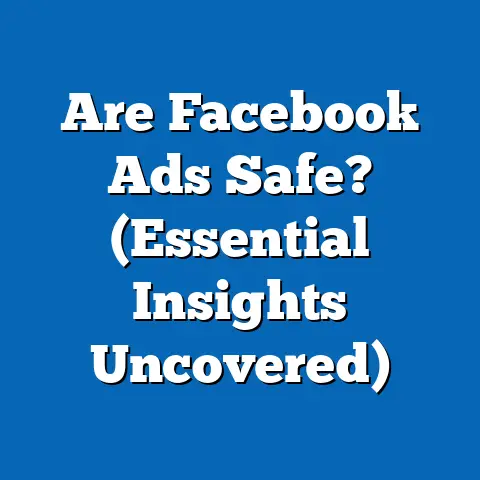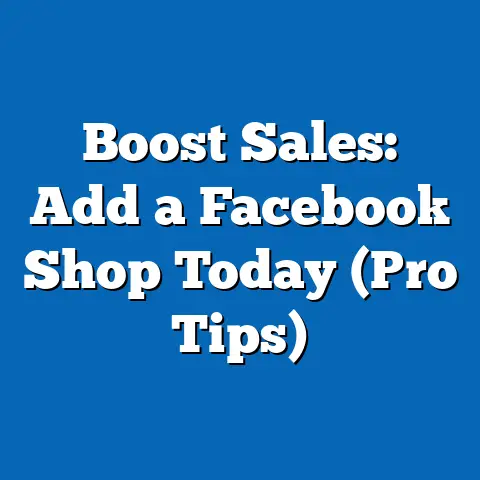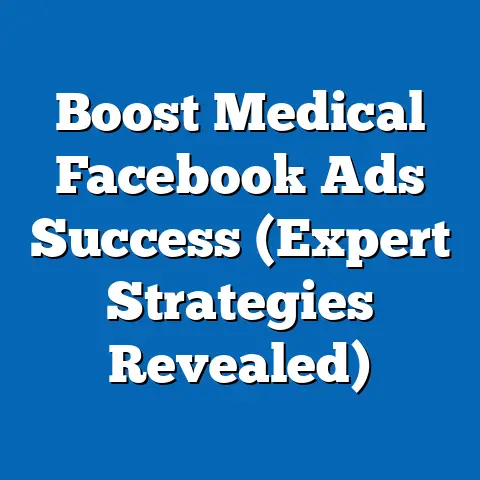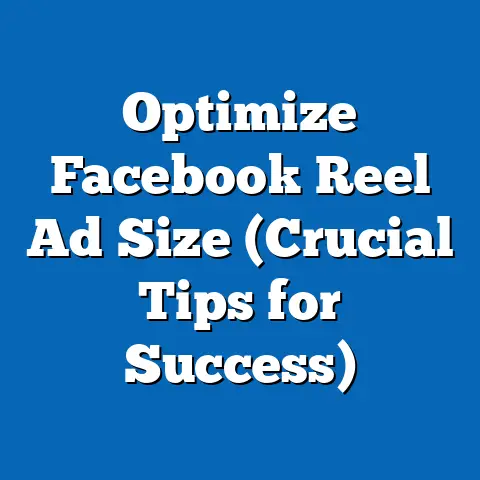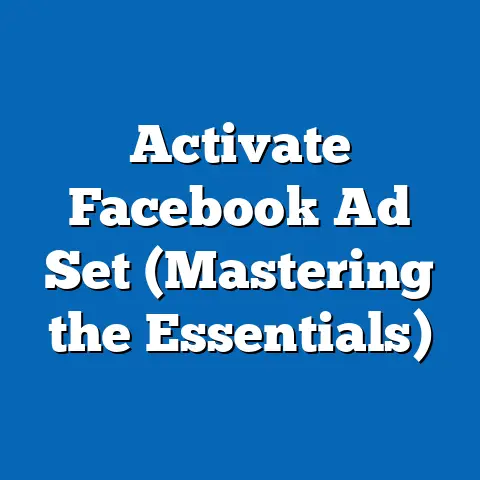Maximize Amazon Prime Day Sales with Facebook Ads (Expert Tips)
Amazon Prime Day. The mere mention of it sends shivers down the spines of retailers and marketers alike – shivers of excitement, anticipation, and maybe a little bit of dread. It’s the Super Bowl of e-commerce, a 48-hour frenzy where consumers go wild for deals, and businesses battle for their attention. But here’s the thing: simply listing your products on Amazon isn’t enough. You need a strategy, a weapon, a secret ingredient to truly stand out and capture those precious Prime Day sales. That’s where Facebook Ads come in.
I’ve seen firsthand how a well-crafted Facebook ad campaign can transform a modest Prime Day into a record-breaking one. I recall working with a small, family-owned business selling artisanal coffee beans. They were hesitant to invest in Facebook Ads, fearing they’d get lost in the noise. But with a targeted campaign, compelling visuals, and a dash of urgency, we saw their Prime Day sales increase by a staggering 300%! That’s the power we’re talking about.
In this guide, I’m going to share my expert tips on how to leverage Facebook Ads to maximize your Amazon Prime Day sales. We’ll dive deep into crafting your strategy, creating compelling content, and optimizing your campaigns for maximum impact. So, buckle up and get ready to turn Prime Day into your prime opportunity!
Understanding Amazon Prime Day and Its Impact on Sales
Amazon Prime Day has become a major shopping event, rivaling Black Friday and Cyber Monday in its impact on e-commerce. What started as a 24-hour celebration of Amazon’s 20th anniversary in 2015 has evolved into a 48-hour (or longer!) shopping extravaganza, offering Prime members exclusive deals on a wide range of products.
The purpose of Prime Day is multifaceted:
- Drive Prime Memberships: Attract new customers to sign up for Amazon Prime.
- Increase Sales: Boost overall sales volume for Amazon and its third-party sellers.
- Clear Inventory: Offer discounts on older or overstocked items.
- Brand Visibility: Increase awareness and visibility for participating brands.
Typically, the types of products that see high sales volumes during Prime Day include electronics, home goods, apparel, beauty products, and Amazon devices. However, the specific categories that perform best can vary from year to year based on trends and consumer demand.
The competitive landscape during Prime Day is intense. Millions of businesses, both large and small, are vying for consumer attention. This means that simply having great products and competitive pricing isn’t enough. You need a robust marketing strategy to stand out from the crowd.
Preparation and strategy are crucial for businesses aiming to capitalize on Prime Day. This includes:
The Power of Facebook Ads in E-Commerce
Facebook Ads have become an indispensable tool for e-commerce businesses looking to reach a wider audience, drive traffic to their online stores, and ultimately boost sales. With billions of active users worldwide, Facebook offers unparalleled reach and targeting capabilities.
Here are some key statistics that illustrate Facebook’s user engagement and advertising potential:
- Monthly Active Users (MAUs): As of Q1 2024, Facebook boasts nearly 3.07 billion monthly active users. This massive user base provides a vast pool of potential customers for businesses to target.
- Daily Active Users (DAUs): The platform also sees over 2 billion daily active users, indicating high levels of engagement and repeat usage.
- Ad Revenue: Facebook’s advertising revenue continues to grow, reaching billions of dollars each quarter. This demonstrates the effectiveness of Facebook Ads as a marketing channel.
- Ad Click-Through Rate (CTR): While CTRs vary depending on industry and ad format, Facebook Ads generally offer competitive click-through rates compared to other online advertising platforms.
The unique advantages of Facebook Ads include:
- Targeting Capabilities: Facebook allows you to target specific demographics, interests, behaviors, and even custom audiences based on your existing customer data. This level of targeting ensures that your ads are seen by the people most likely to be interested in your products.
- Cost-Effectiveness: Compared to traditional advertising methods, Facebook Ads can be a more cost-effective way to reach a large audience. You can set your own budget and bid for ad placements, allowing you to control your spending.
- Visually Appealing Ads: Facebook offers a variety of ad formats, including image ads, video ads, carousel ads, and collection ads. These formats allow you to create visually appealing ads that capture attention and showcase your products in an engaging way.
- Real-Time Analytics: Facebook Ads Manager provides detailed analytics and reporting tools that allow you to track the performance of your campaigns in real-time. This data can help you identify what’s working and what’s not, allowing you to make adjustments and optimize your campaigns for better results.
Takeaway: Facebook Ads offer a powerful combination of reach, targeting, cost-effectiveness, and visual appeal, making them an ideal tool for e-commerce businesses looking to boost sales.
Crafting Your Facebook Ad Strategy for Prime Day
A successful Facebook ad campaign for Prime Day starts with a well-defined strategy. This involves identifying your target audience, setting clear objectives, and aligning your ad strategy with your overall business goals.
Target Audience Identification
Understanding your target audience is crucial for creating effective Facebook Ads. This involves identifying and segmenting your audience based on demographics, interests, and behaviors.
- Demographics: Consider factors such as age, gender, location, education level, and income.
- Interests: Identify your audience’s interests based on the pages they like, the groups they join, and the topics they engage with on Facebook.
- Behaviors: Target users based on their online behaviors, such as their purchase history, the types of ads they click on, and the devices they use.
Creating customer personas can be a helpful way to visualize and understand your target audience. A customer persona is a fictional representation of your ideal customer, based on research and data about your existing customers.
For example, if you’re selling fitness apparel, your customer persona might be “Active Amy,” a 30-year-old woman who enjoys running, yoga, and healthy eating. By understanding Amy’s interests and behaviors, you can create Facebook Ads that resonate with her and encourage her to purchase your products.
Setting Clear Objectives
Before launching your Facebook ad campaign, it’s important to set clear and measurable objectives. These objectives should align with your overall business goals for Prime Day.
Common objectives for Facebook ad campaigns include:
- Increasing Brand Awareness: Reach a wider audience and increase awareness of your brand and products.
- Driving Traffic: Drive traffic to your Amazon listings and increase the number of visitors to your product pages.
- Boosting Sales: Increase the number of sales and revenue generated during Prime Day.
When setting objectives, it’s important to make them specific, measurable, achievable, relevant, and time-bound (SMART).
For example, instead of setting a vague objective like “increase sales,” you could set a SMART objective like “increase sales by 20% during Prime Day compared to the previous year.”
Takeaway: A well-defined strategy that includes target audience identification and clear objectives is essential for creating effective Facebook Ads for Prime Day.
Creating Compelling Ad Content
The content of your Facebook Ads is what will ultimately capture the attention of your target audience and drive them to take action. This includes both the visual elements of your ads and the ad copywriting.
Visual Elements
Eye-catching visuals are essential for making your Facebook Ads stand out in a crowded newsfeed. This includes using high-quality images and videos that showcase your products effectively.
- Images: Use clear, well-lit images that highlight the key features and benefits of your products. Consider using lifestyle images that show your products in use.
- Videos: Videos can be a highly engaging way to showcase your products and tell your brand story. Consider creating short, attention-grabbing videos that highlight the benefits of your products and encourage viewers to click through to your Amazon listings.
When designing visuals for Prime Day, it’s important to incorporate elements that convey the urgency and excitement of the event. This could include using Prime Day branding, highlighting discounts and promotions, and creating a sense of scarcity.
Ad Copywriting
Persuasive ad copy is essential for encouraging clicks and conversions. This includes writing clear, concise, and compelling copy that highlights the benefits of your products and includes a clear call to action (CTA).
- Benefits: Focus on the benefits of your products rather than just the features. Explain how your products can solve your customers’ problems or improve their lives.
- CTAs: Use clear and concise CTAs that tell your audience what you want them to do. Examples include “Shop Now,” “Learn More,” and “Get the Deal.”
- Urgency: Create a sense of urgency by highlighting limited-time offers and emphasizing the fact that Prime Day deals won’t last forever.
For example, instead of writing “Our coffee beans are ethically sourced,” you could write “Start your day with the rich, delicious flavor of our ethically sourced coffee beans. Shop now and get 20% off for Prime Day only!”
Takeaway: Compelling ad content that includes eye-catching visuals and persuasive ad copywriting is essential for driving clicks and conversions on Facebook Ads.
Budgeting and Bidding Strategies
Determining an effective budget and bidding strategy is crucial for maximizing the return on investment of your Facebook ad campaign.
Budgeting
The amount you should budget for your Facebook ad campaign will depend on a variety of factors, including your target audience, your campaign objectives, and the competitiveness of your industry.
As a general rule of thumb, it’s better to start with a smaller budget and gradually increase it as you see positive results. This allows you to test different ad formats, targeting options, and bidding strategies without risking a large amount of money.
Bidding Strategies
Facebook offers a variety of bidding strategies that you can use to optimize your ad campaign for different goals.
Common bidding strategies include:
- Lowest Cost: This strategy aims to get you the most results for your budget by bidding aggressively to win auctions.
- Cost Cap: This strategy allows you to set a target cost per result and Facebook will bid to achieve that cost.
- Target Cost: This strategy aims to get you results at a specific cost per result.
- Manual Bidding: This strategy gives you complete control over your bids, allowing you to set your own maximum bids for each auction.
The right bidding strategy for your campaign will depend on your objectives and your level of experience with Facebook Ads. If you’re new to Facebook Ads, it’s generally best to start with the Lowest Cost strategy and gradually experiment with other strategies as you gain more experience.
Takeaway: An effective budgeting and bidding strategy is crucial for maximizing the return on investment of your Facebook ad campaign.
Utilizing Facebook Ad Formats for Maximum Impact
Facebook offers a variety of ad formats that you can use to showcase your products and engage with your target audience.
Common ad formats include:
- Image Ads: These are simple ads that consist of an image, ad copy, and a CTA.
- Video Ads: These are ads that feature a video, ad copy, and a CTA.
- Carousel Ads: These ads allow you to showcase multiple products or features in a single ad unit.
- Collection Ads: These ads are designed to showcase products in a visually appealing and immersive way.
The right ad format for your campaign will depend on your product type, your campaign objectives, and your target audience.
For example, if you’re selling clothing, carousel ads can be a great way to showcase multiple outfits and styles. If you’re selling electronics, video ads can be a great way to demonstrate the features and benefits of your products.
Takeaway: Utilizing the right Facebook ad formats can significantly improve the performance of your campaigns and drive more sales.
A/B Testing for Optimization
A/B testing, also known as split testing, is the process of testing different versions of your Facebook Ads to see which performs best. This can involve testing different visuals, ad copy, targeting options, and bidding strategies.
By A/B testing your ads, you can identify what’s working and what’s not, allowing you to make data-driven decisions and optimize your campaigns for better results.
For example, you could A/B test two different versions of your ad copy to see which generates more clicks. Or, you could A/B test two different targeting options to see which reaches a more engaged audience.
Takeaway: A/B testing is essential for optimizing your Facebook Ads and maximizing your return on investment.
Monitoring and Adjusting Campaigns in Real-Time
Monitoring your ad performance in real-time is crucial for ensuring that your campaigns are on track to meet your objectives. This involves tracking key metrics such as:
- Impressions: The number of times your ads are shown to your target audience.
- Clicks: The number of times people click on your ads.
- Click-Through Rate (CTR): The percentage of impressions that result in clicks.
- Cost Per Click (CPC): The average cost you pay for each click on your ads.
- Conversions: The number of sales or leads generated by your ads.
- Return on Ad Spend (ROAS): The amount of revenue you generate for every dollar you spend on advertising.
By tracking these metrics in real-time, you can identify any issues or opportunities and make quick adjustments to optimize your ad performance for maximum sales.
For example, if you notice that your CTR is low, you might try testing different ad copy or visuals. If you notice that your CPC is high, you might try adjusting your bidding strategy or targeting options.
Takeaway: Real-time monitoring and adjustment are essential for optimizing your Facebook Ads and maximizing your sales during the Prime Day event.
Preparing for Success This Amazon Prime Day
Amazon Prime Day is a prime opportunity for businesses to boost sales and reach a wider audience. By leveraging the power of Facebook Ads and following the expert tips outlined in this guide, you can create a successful ad campaign that drives traffic to your Amazon listings and generates significant revenue.
Remember to:
- Start planning early: Don’t wait until the last minute to create your Facebook ad campaign.
- Identify your target audience: Understand your customers’ demographics, interests, and behaviors.
- Set clear objectives: Define what you want to achieve with your Facebook ad campaign.
- Create compelling ad content: Use eye-catching visuals and persuasive ad copywriting.
- Determine an effective budget and bidding strategy: Optimize your ad spend for maximum return on investment.
- Utilize the right Facebook ad formats: Choose ad formats that showcase your products and engage with your target audience.
- A/B test your ads: Continuously test different versions of your ads to see which performs best.
- Monitor and adjust your campaigns in real-time: Track key metrics and make quick adjustments to optimize ad performance.
By implementing these expert tips, you can prepare for success this Amazon Prime Day and maximize your sales potential. Now go out there and conquer Prime Day!

